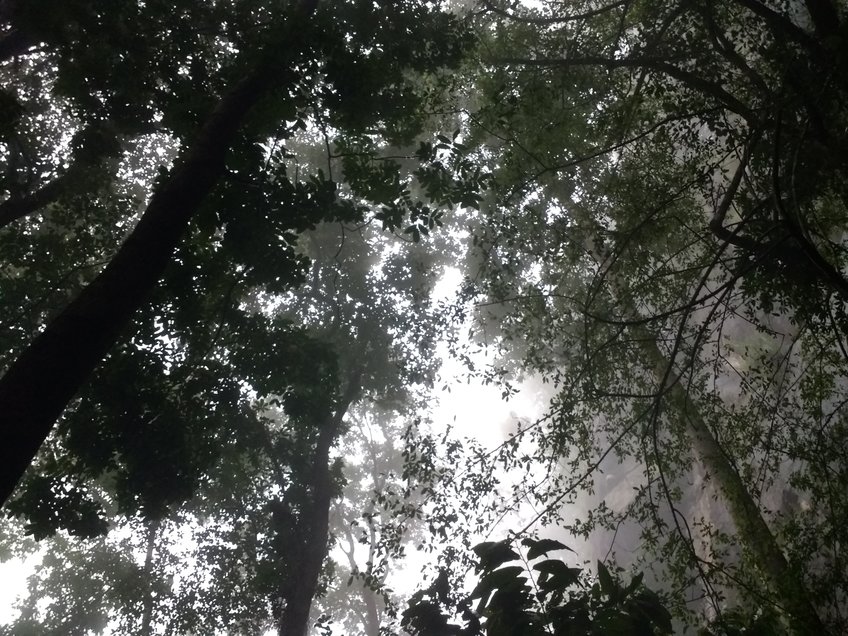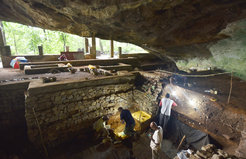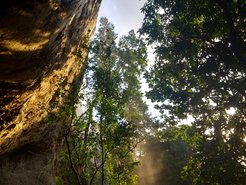
New Evidence for Rainforest Foraging in Sri Lanka ca. 45,000 years ago
Results of investigations at Kitulgala Beli-lena led by researchers from the Department of Archaeology confirm human occupation of Sri Lanka’s rainforest region as early as ca. 45,000 cal. BP
Sri Lanka has produced the earliest clear evidence for Homo sapiens fossils in tropical rainforest environments in South Asia. However, in-depth multidisciplinary analyses of archaeological sequences remain limited to just two sites. A paper recently published in Quaternary Science Reviews details evidence for modern human adaptations and cultural practices from a third rockshelter site: Kitulgala Beli-lena.

Located in Sri Lanka’s Wet Zone rainforest region, Kitulgala Beli-lena was re-excavated in 2017 by archaeologists from the Max Planck Institute for the Science of Human History alongside researchers from University of Sri Jayewardenepura in Sri Lanka and other international institutions. The excavation aimed to recover new archaeological material in order to refine the chronology of the site and better understand early human culture, technology, and subsistence strategies.
Plant gathering and stone tool production ca. 45,000 years ago
New radiocarbon dates showed that Kitulgala Beli-lena had episodic human occupation, from around ca. 44,000 to 31,000 cal. BP. This early human presence is associated with clear evidence for rainforest plant gathering, specifically of wild breadfruit (Artocarpus nobilis) and kekuna nut (Canarium zeylanicum). Both of these plants provide a rich source of starch, fats, and protein, and require little processing. Sediments from the earliest phase of site occupation also yielded evidence for the manufacture of quartz flakes using the bipolar-on-anvil method, which hints on how the early foragers made use of their landscape.
A Pleistocene preference for monkeys and freshwater snails
Kitulgala Beli-lena saw increased human occupation starting with the Terminal Pleistocene, beginning roughly 17,000-12,000 years ago and continuing to around 8,000 years ago. During this time, the people that utilized the rockshelter relied heavily on small arboreal and semi-arboreal animals, specifically monkeys and squirrels, as well as freshwater snails. Tools made from monkey bones, projectile points possibly used to hunt the arboreal animals, were also found in the same sedimentary layers. Together with the quartz tools dating to the same period, these findings suggest that the Kitulgala foragers developed a sophisticated tool kit for the exploitation of their immediate landscapes.

Specialized rainforest adaptation
The evidence reported from Kitulgala Beli-lena adds to the knowledge of specialized rainforest adaptation of early humans in tropical environments. Considering the results of studies looking at other sites in the region, a complex picture of specialized rainforest occupation and exploitation is starting to emerge. It appears that Kitulgala Beli-lena, and the previously reported sites in the region, all formed part of a network of hunting ranges, plant exploitation routes, and settlement strategies. In addition, the continuous human presence in the region from the Late Pleistocene to the Historic period suggests an ability of foragers to persist in rainforest settings indicative of sustainability of rainforest resource exploitation.

